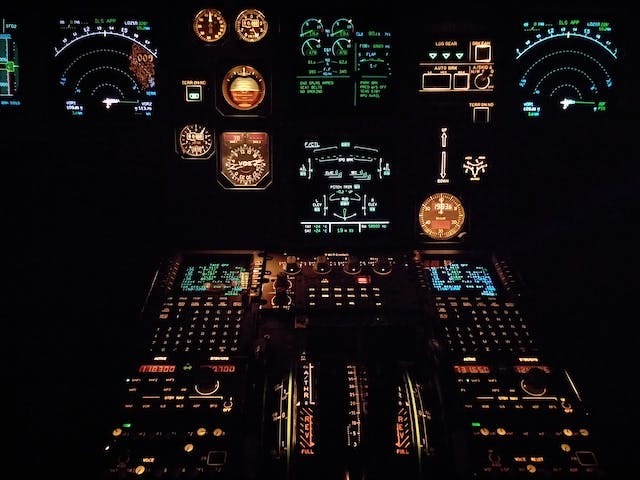In the ever-evolving realm of aviation, the intricate equilibrium between technology and engineering assumes a pivotal role in propelling progress and ensuring safety. The fusion of state-of-the-art technology and precision engineering stands as the driving force behind the continual advancement of the global aviation sector.
The Technological Dimension in Aviation:
Technology serves as the catalyst for notable progress in the aviation sector. Ranging from the development of highly fuel-efficient engines to the implementation of cutting-edge avionics systems, technology consistently redefines the boundaries of possibilities in the skies. An exemplary instance of this is the seamless integration of Artificial Intelligence (AI) in flight control systems, amplifying navigation accuracy and overall safety.
In the aviation industry’s pursuit of enhanced safety and operational efficiency, engineers continually innovate, developing cutting-edge technologies to facilitate seamless ground operations and contribute to the overall reliability of aircraft. Contemporary aircraft heavily depend on sophisticated sensors, communication systems, and computer algorithms for efficient operation.
Advanced radar systems, for instance, empower pilots to navigate through adverse weather conditions with pinpoint precision, thereby enhancing the safety of both passengers and crew. Moreover, the utilization of data analytics and predictive maintenance technologies ensures the optimal condition of aircraft, mitigating the risk of unforeseen failures.
Automation stands out as another technological marvel reshaping the aviation landscape. Autopilot systems, coupled with advanced navigation technologies, not only enhance the accuracy of flight paths but also alleviate the workload on pilots. This enables them to concentrate on crucial decision-making throughout essential stages of the flight.
The Role of Engineering in Aviation:
While technology provides the tools for advancement, engineering serves as the indispensable backbone, transforming these tools into tangible, functional components. Engineers in the aviation sector shoulder the responsibility of designing, building, and maintaining the physical structures and systems crucial for air travel. For example, aeronautical engineers play a crucial role in crafting the plans and overseeing the production of modern aircraft while other timeless equipment designs, like aircraft towbars, remain relatively unchanged.
Their task often involves creating structures that are not only aerodynamically efficient but also robust enough to endure the rigors of flight. The meticulous engineering behind materials used in aircraft construction ensures not only lightweight structures but also durability, contributing to fuel efficiency and overall performance.
Mechanical engineers contribute significantly to the development of propulsion systems, concentrating on enhancing efficiency and minimizing environmental impact. The evolution of jet engines, transitioning from traditional designs to more fuel-efficient and environmentally friendly models, serves as a testament to the engineering prowess within the aviation sector. The integration of technology into aircraft necessitates intricate engineering solutions.
Avionic engineers, for example, work diligently on the seamless integration of advanced communication, navigation, and surveillance systems. Their role ensures these systems operate harmoniously, providing pilots with accurate and reliable information throughout the entire flight.
The Symbiotic Relationship:
The synergy between technology and engineering in aviation is evident in the perpetual pursuit of innovation. Engineers leverage technological progress to design aircraft that exhibit heightened efficiency, increased reliability, and enhanced safety features. Simultaneously, technology equips engineers with tools and insights that were once unimaginable, enabling them to push the boundaries of what is achievable.
The collaborative endeavour is exemplified by the advancement in electric and hybrid propulsion systems. Engineers leverage cutting-edge battery technology, while avionic specialists integrate sophisticated control systems. This leads to aircraft that are both environmentally sustainable and economically feasible.
Ongoing Evolution:
The aviation industry’s dependence on both technology and engineering underscores the imperative for constant adaptation. Swift progress in technology demands that engineers consistently remain at the vanguard of innovation, perpetually refining their skill sets to incorporate the most recent technological advancements into the design and functionality of aircraft.
This interdependence cultivates an environment of continual learning and enhancement, guaranteeing that the aviation sector sustains its position at the forefront of technological and engineering prowess.
The collaborative synergy between technological innovation and engineering proficiency manifests as an enduring commitment to addressing the ever-changing needs of air travel, underscoring the industry’s resilience and unwavering dedication to safety, efficiency, and advancement.
Conclusion:
In the aviation sector, the interplay between technology and engineering constitutes a harmonious dance, propelling the industry to unprecedented heights. As technology continues its evolution, engineers face evolving challenges that drive them to create innovative solutions. The dynamic relationship between these two elements ensures that the skies remain a testament to human ingenuity, where technology and engineering converge to shape the future of aviation.


